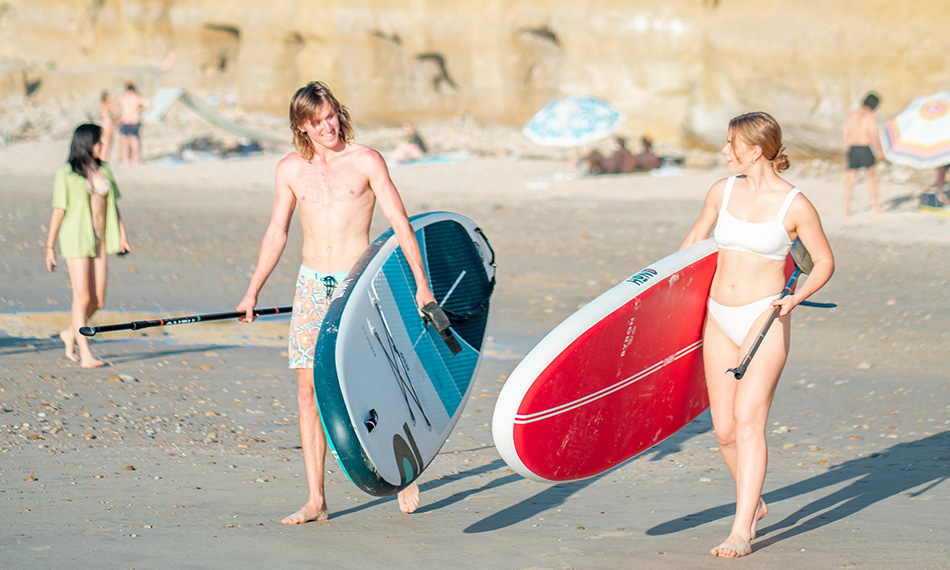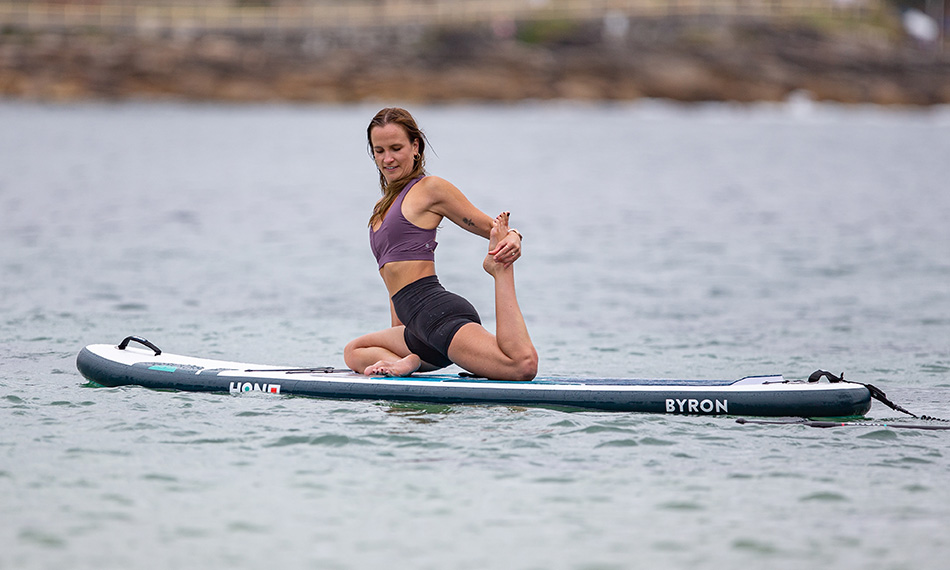Paddle Boarding 101Updated 3 years ago

Since you have unpacked your board and you're ready to go! Here are some tips to make sure you have a great time on your first SUP trip 😊.
1. Check the weather - Be aware of the conditions even if you are going to paddle out on flat water. You don’t want to be out there if there are strong winds. Always check the wind direction. If it's blowing off-shore, it may take you longer to get back than you expect so be mindful of that.
2. Personal Floatation Device (PFD) - Depending on where you are going, a PFD is not always essential. But if you are heading out into open water and plan to be more than 200 meters from the shore, it is a law to have one on. If you are not a confident swimmer or feel nervous in any way then you should use one in every situation.
And for anyone not confident in the water, it’s always a good option to bring a PFD with you. You don’t necessarily have to put it on—we get you, it can feel really bulky and uncomfortable—but at least have it ready on your board. You can inflate it before you head out to the water or you can bring a pump with you and inflate for when the time calls for it.
3. Paddleboard Leash - The leash attaches your leg to the paddleboard so that you won’t have to worry about losing your board if you fall off. With a leash, your board is always within reach. Be sure to have it on every time you head out to paddle. It’s for your and other people’s safety.
There are different types of leashes for different water environments: coiled leashes for flatwater paddling, straight leashes for surfing, and quick-release or breakaway leashes for turbulent rivers. The breakaway leashes can be quickly released if your board is pulling you into dangerous situations or getting you tangled around rocks or branches.
4. Sun-shielding Hats and/or Sunglasses - You may be thinking, why put on a sun-shielding hat when I’m already going to be applying sunscreen? Well, hats are great at protecting your eyes and facial skin. Also, with a hat casting a shadow over your eyes, you can more easily look at the reflective water surface without squinting too much. Wear sunglasses too, if you want maximum eye protection.
5. Carry your board - You may want to carry your board in and out of the water. Don’t drag it to the beach 😊 (Don’t worry our boards are lightweight 😉) Carry your board until it’s deep enough that the fin won’t hit the bottom. The last thing we want is a broken fin 😊.
6. Standing up on your board - You may have a hard time standing up on your board, so at first, you can get on your board on your knees to get started. The handle is a good indicator of the center point of the board and that is where you want your foot to be when standing. Not too far in front or back 😊. Once you are on the board (on your knees) you might wanna paddle a bit to get the board moving to get more stability 😊 Once moving, put your put the paddle in front of you and stand with your knees bent little. A stable/defensive stance 😉 Once you are up, start to paddle again to get a feel of your board.
7. How to paddle - A common mistake of beginners is holding the paddle the wrong way. Always hold your paddle with the blade angled away for yourself. When paddling, the paddle should be straight up and down in the water. Paddle straight 😊 change sides from time to time to go in a straight line. If you paddle only on one side it will make the board turn slowly 😊. To make it turn faster paddle to the front on the opposite side 😉.
8. Drybag - For your phone, water, and maybe a snack. You don’t have to worry about where to place it as all honu boards have a bungee to secure it during your SUP trips 😉.
Once all is set, you can find yourself a nice location and start paddling! See you in the waters!

Which Standup Paddle Boards is Right For You?
While there are many types of paddleboards, SUP boards generally fall into one of four categories: Surf, All-rounder, Flatwater/Touring, and Racing. And these are available as either SUPs (hardboard) or iSUPs (inflatable). There are also several hybrid boards that can straddle a category offering features from both categories.
Each of these categories is designed to perform in specific conditions. So when choosing which board is right for you, consider:
- How you will be using your paddleboard?
- What type of water you will be accessing the most?
- Your level of experience
- How you will store and transport your board?
All of these factors play a part in choosing the perfect board - because there is a board that will suit everyone! Read HERE to know more 😊.

Benefits of Standup Paddleboarding
Standup paddleboarding is a very unique activity for your entire body. Not only is it fun to do with your friends and family, but it is beneficial to your own personal wellness and health!
- Stress reliever - Imagine being at work for more than 40hrs with all the deadlines to meet and etc. Get a screen-free time alone or with your best buds out in the open waters just admiring the beauty of nature will absolutely take your breath and stress away.
- Perfect work-out - Standup paddleboarding is a perfect work-out as it requires you to use your whole body! Use your leg muscles to maintain your balance, back, arm, shoulder, and torso muscles to paddle!
- Connect with nature - Whether you'd be paddling in a lake, rapids, or ocean. You'd be surrounded by nothing but the beauty of nature! Which will make you appreciate the beauty of it that we tend to forget when we are back in our urban jungle! To add you'd be closer to water with our 4'7 boards 😉.
- Zen state of mind - Standup paddleboarding requires a lot of skill to master. It will help you develop your focus, balance, and cognitive function. That is why SUP yoga is something every paddler should try.
So that being said 😊 what are you waiting for? Hope to see you out in the waters 😉.